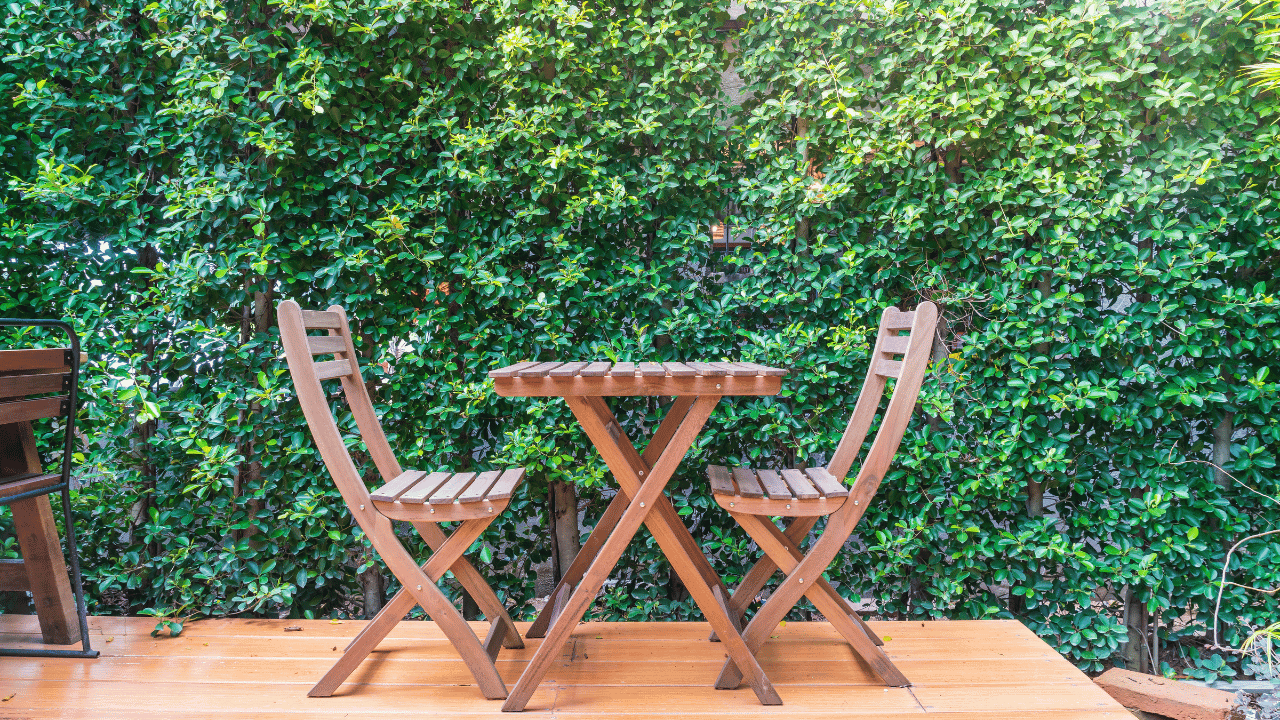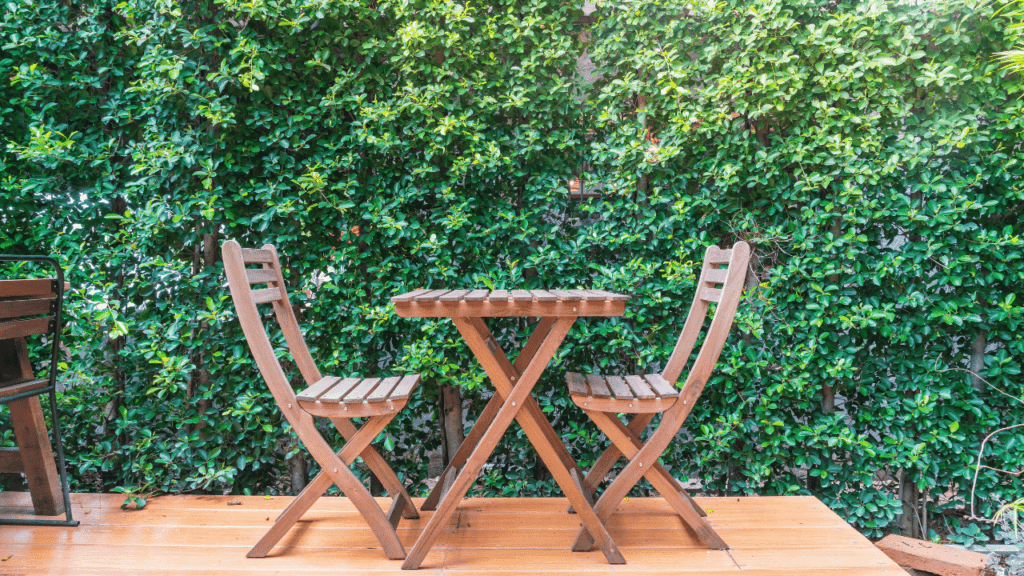Best Wood for Outdoor Furniture Top Options and Expert Guide

Best Wood for Outdoor Furniture Top Options and Expert Guide
Best Wood for Outdoor Furniture: Stylish Wood for Outdoor Furniture The Ultimate Guide
Choosing the right wood for out-of-door cabinetwork is essential for creating a durable and visually appealing out-of-door space. The ideal wood must n’t only round the aesthetics of your theater or yard but also repel the challenges posed by colorful rainfall conditions.
Tropical hardwoods like teak and ipe are popular choices due to their natural resistance to humidity, insects, and decay. Teak, with its high oil painting content, naturally repels water and requires minimum conservation, making it an excellent choice for long- lasting out-of-door cabinetwork. On the other hand, ipe is known for its inconceivable viscosity and continuity, frequently lasting over 25 times with proper care. These forestland, while more precious, offer a dateless fineness and superior performance that justify their advanced cost.
In discrepancy, if you’re looking for further affordable options, cedar and acacia present great druthers . Cedar is naturally resistant to spoilage and insects, and its light, sweet wood offers a rustic charm that’s perfect for out-of-door settings.
Although softer than teak or ipe, cedar’s resistance to humidity makes it a feasible option, especially when treated with a defensive finish. Acacia, another budget-friendly choice, is known for its strength and rich color. While it does n’t retain the same natural canvases as teak, regular operation of sealant can help maintain its beauty and help cracking over time. By choosing the right wood and following proper care ways, your out-of-door cabinetwork can remain a swish and durable addition to your home for times to come.

Table of Contents
Best Wood for Outdoor Furniture: Teak The Gold Standard for Outdoor Furniture
Best Wood for Outdoor Furniture Teak is extensively honored as the decoration choice for out-of-door cabinetwork, frequently appertained to as the” gold standard.” This tropical hardwood, native to Southeast Asia, is famed for its exceptional continuity and resistance to environmental factors. The high natural oil painting content in teak repels water, prevents decay, and makes it nearly vulnerable to nonentity infestations. This adaptability allows teak to endure indeed the harshest conditions, maintaining its integrity without warping or cracking over time.
Life One of teak’s most significant advantages is its life. With proper care, teak cabinetwork can last for decades, making it a good investment. The wood’s natural parcels insure that it remains strong and beautiful, indeed after times of exposure to the rudiments.
Low conservation Teak’s continuity is rounded by its low conservation conditions. Over time, undressed teak develops a beautiful argentine-argentine air, which numerous find desirable. still, if you prefer to retain its original golden- brown tinge, occasional oiling is sufficient.
Weather Resistance The natural canvases in teak make it largely resistant to water, precluding spoilage and decay. This rainfall resistance is especially important for cabinetwork left outside time- round, as it ensures the wood remains robust in all seasons.
Aesthetic Appeal Teak’s rich color and fine grain give it a sophisticated and luxurious appearance, making it a favorite among those who appreciate both form and function in their out-of-door spaces.
Conservation Tips
- Drawing Regular cleaning with a mild cleaner result and a soft encounter will remove dirt and debris. wash with water and allow it to state dry to maintain its pristine condition.
- Teak Oil While not necessary, applying teak oil painting can help save the wood’s original color. This should be done sparingly, asover-oiling can lead to mildew growth.
Best Wood for Outdoor Furniture: Cedar A Lightweight and sweet Choice
Best Wood for Outdoor Furniture Cedar is another excellent option for out-of-door cabinetwork, prized for its featherlight nature and affable aroma. This softwood, generally set up in North America, is naturally resistant to insects and rot, making it a practical choice for out-of-door settings. Cedar’s adaptability, combined with its affordability, makes it a popular choice for those seeking durable yet budget-friendly out-of-door cabinetwork.
Natural nonentity Repellent One of cedar’s most notable features is its natural nonentity- repelling parcels. The wood’s sweet canvases discourage pests similar as moths and termites, icing your cabinetwork remains complete and free from damage.
Affordability Cedar is more affordable than numerous hardwoods, furnishing an excellent balance between cost and continuity. This makes it an accessible choice for those looking to furnish their out-of-door spaces without breaking the bank.
Lightweight Cedar’s featherlight nature makes it easy to move and rearrange, ideal for those who enjoy changing the layout of their out-of-door area. Despite its lightness, cedar remains strong and sturdy.
sweet The natural scent of cedar adds an earthy, affable aroma to your out-of-door space, enhancing the overall air and making it a pleasurable place to relax.
Conservation Tips
- Staining To maintain its vibrant color and extend its lifetime, consider staining cedar cabinetwork. This not only enhances its appearance but also provides fresh protection against the rudiments.
- Regular drawing Clean cedar cabinetwork with a soft cloth and mild soap to remove dirt and smut. Avoid harsh chemicals, as they can damage the wood’s natural canvases .
- Sealing Applying a clear sealant annually will cover the wood from humidity and UV damage, icing it remains in top condition.
Best Wood for Outdoor Furniture: Redwood A Strong and Beautiful Option
Best Wood for Outdoor Furniture Redwood is a decoration softwood that combines continuity with stunning visual appeal. Sourced primarily from the littoral regions of the United States, redwood is known for its natural resistance to decay and insects. Its distinctive sanguine tinge adds warmth and fineness to out-of-door spaces, making it a popular choice for those looking to produce a welcoming terrain.
continuity Redwood’s high tannin content contributes to its exceptional continuity. These tannins act as a natural preservative, guarding the wood from humidity and pests. This continuity makes redwood a dependable choice for out-of-door cabinetwork, able of opposing colorful rainfall conditions.
Sustainability numerous redwood products are sourced from sustainable timbers, making it aneco-friendly option for environmentally conscious consumers. Choosing redwood not only enhances your out-of-door space but also supports sustainable forestry practices.
Aesthetic Appeal Redwood’s deep, rich color and straight grain make it a visually striking choice for out-of-door cabinetwork. Its natural beauty can enhance any out-of-door setting, creating a warm and inviting atmosphere.
Stability Redwood is less prone to screwing and revulsion, indeed in shifting rainfall conditions. This stability ensures that your cabinetwork maintains its shape and structure over time, furnishing long- lasting comfort and aesthetics.
Conservation Tips
- Sealing To save redwood’s natural color and help graying, apply a UV- resistant sealant every many times. This will cover the wood from the sun’s harsh shafts and keep it looking vibrant.
- drawing Use a mild cleaner and water result to clean the face, avoiding power washing, which can damage the wood’s delicate grain.
- Staining If you prefer a more tailored look, redwood can be stained to enhance its natural color or match your out-of-door scenery.
Best Wood for Outdoor Furniture: Eucalyptus A Sustainable and Durable Hardwood
Best Wood for Outdoor Furniture: Eucalyptus is an decreasingly popular choice for out-of-door cabinetwork due to its sustainability and continuity. This presto- growing hardwood is frequently sourced from managed colonies, making it an environmentally responsible option. Eucalyptus wood is thick and flexible, able of opposing harsh rainfall conditions while maintaining its strength and beauty.
Sustainability Eucalyptus is constantly gathered from responsibly managed colonies, making it a sustainable choice for out-of-door cabinetwork. By choosing eucalyptus, you contribute to the preservation of natural timbers and support sustainable practices.
Affordability Compared to teak, eucalyptus offers analogous benefits at a lower cost, making it an seductive option for those seeking continuity without the decoration price label. This affordability does n’t compromise the quality or life of the cabinetwork.
continuity Eucalyptus wood is tough and durable, suitable to repel exposure to the rudiments without significant wear and tear. Its high oil painting content helps repel water and help decay, icing your cabinetwork remains in excellent condition for times.
Versatility Eucalyptus can be left undressed to develop a natural air, or it can be stained or painted to match your particular style. This versatility allows for lesser customization of your out-of-door space.
Conservation Tips
- Oiling Regularly apply eucalyptus oil painting to maintain its color and cover it from drying out. This helps save the wood’s natural beauty and extend its lifetime.
- drawing Clean eucalyptus cabinetwork with a mild soap and water, avoiding abrasive cleansers that can damage the wood. This gentle approach keeps the face clean without stripping it of its natural canvases .
- Covering To cover eucalyptus cabinetwork during the off- season, use covers. This prevents inordinate exposure to harsh rainfall conditions and prolongs the life of your cabinetwork.
Best Wood for Outdoor Furniture: Acacia A Budget- Friendly Hardwood
Best Wood for Outdoor Furniture: Acacia is a protean and affordable hardwood, making it a popular choice for out-of-door cabinetwork. Native to regions like Australia, Africa, and Asia, acacia is known for its viscosity and resistance to wear and tear. Its seductive grain pattern and rich color make it an charming volition to more precious forestland like teak.
Affordability Acacia offers a cost-effective result for those looking to furnish their out-of-door spaces without compromising on quality. Despite its lower price point, acacia provides continuity and beauty similar to more precious hardwoods.
continuity Acacia’s viscosity makes it largely resistant to the rudiments, including rain and sun exposure. This adaptability ensures that your cabinetwork remains sturdy and complete, indeed in grueling out-of-door surroundings.
Aesthetic Appeal The rich color and unique grain pattern of acacia wood add a touch of fineness to out-of-door cabinetwork. Its natural beauty enhances any out-of-door setting, making it a popular choice for both traditional and contemporary designs.
Sustainability Acacia is frequently sourced from presto- growing, renewable colonies, making it an environmentally friendly option. By choosing acacia, you support sustainable forestry practices and contribute to the conservation of natural coffers.
Conservation Tips
- Sealing To cover acacia wood from humidity and UV shafts, apply a sealant annually. This helps help cracking and extends the life of your cabinetwork.
- drawing Use a soft encounter and mild cleaner to clean the face of acacia cabinetwork. wash completely and allow it to dry naturally to avoid water damage.
- Oiling Applying acacia oil painting helps maintain the wood’s color and prevents it from drying out. Regular oiling enhances the wood’s natural luster and keeps it looking vibrant.
Best Wood for Outdoor Furniture: Ipe The fantastic Hardwood
Best Wood for Outdoor Furniture Ipe, also known as Brazilian Walnut, is an fantastic hardwood celebrated for its extraordinary strength and continuity. This thick wood is naturally resistant to spoilage, decay, and nonentity damage, making it an ideal choice for out-of-door cabinetwork. Ipe’s dark brown color and fine texture give it a luxurious, high- end appearance that adds complication to any out-of-door space.
Benefits of Ipe
- Extreme Durability Ipe is one of the hardest forestland available, making it exceptionally durable and suitable to repel heavy use and harsh rainfall conditions.
- Weather Resistance The wood’s thick structure makes it largely resistant to humidity, rot, and nonentity damage, icing life indeed in wet surroundings.
- Low conservation Ipe requires minimum care and can last for decades without significant wear and tear, making it a low- conservation option for out-of-door cabinetwork.
- Aesthetic Appeal Ipe’s deep, rich color and fine grain make it a stunning and elegant choice for out-of-door cabinetwork, adding a touch of luxury to your out-of-door space.
Conservation Tips
- Oiling To maintain its deep brown color, apply Ipe oil painting periodically. Without treatment, Ipe will naturally ride to a beautiful tableware-argentine air.
- drawing Use a soft encounter and mild soap to clean Ipe cabinetwork. Avoid harsh chemicals, which can damage the wood’s natural canvases .
- Sealing Applying a UV- resistant sealant can help cover Ipe from sun damage and extend its lifetime.
Best Wood for Outdoor Furniture: Mahogany Classic Elegance for Outdoor Spaces
Best Wood for Outdoor Furniture: Mahogany is a classic choice for out-of-door cabinetwork, known for its rich, sanguine- brown color and straight grain. This hardwood is n’t only aesthetically pleasing but also largely durable, resistant to spoilage and insects, making it well- suited for out-of-door use. Mahogany’s natural beauty and continuity make it a popular choice for high- end out-of-door cabinetwork that exudes fineness and complication.
Benefits of Mahogany
- Aesthetic Appeal Mahogany’s deep, rich color and fine grain add a touch of fineness and classic beauty to any out-of-door space.
- continuity This hardwood is naturally resistant to decay and nonentity damage, icing that your cabinetwork will last for numerous times.
- Stability Mahogany is less prone to screwing and shrinking compared to other forestland, making it an excellent choice for out-of-door cabinetwork that must endure varying rainfall conditions.
- Plasticity Mahogany is fairly easy to work with, making it a popular choice for custom and intricate cabinetwork designs.
Conservation Tips
- Oiling Regularly apply mahogany oil painting to save its color and cover the wood from environmental damage.
- drawing Use a soft cloth and mild cleaner to clean mahogany shells. wash with water and allow the cabinetwork to state dry.
- Sealing Apply a clear sealant to cover the wood from humidity and UV shafts, precluding riding and dragging the life of the cabinetwork.
Best Wood for Outdoor Furniture: Shorea An Affordable Teak Alternative
Best Wood for Outdoor Furniture Shorea is a thick tropical hardwood that serves as an affordable volition to teak. Native to Southeast Asia, shorea is naturally resistant to spoilage, decay, and insects. Its appearance nearly resembles teak, with a rich golden- brown color and fine grain, making it an seductive option for those who want the benefits of teak without the high cost.
Benefits of Shorea
- Affordability Shorea offers analogous benefits to teak at a lower price point, making it an provident choice for out-of-door cabinetwork.
- continuity This thick wood is largely durable and able of opposing out-of-door conditions, including exposure to humidity and sun.
- Weather Resistance Shorea’s natural canvases help repel water, precluding spoilage and decay, indeed in sticky surroundings.
- Aesthetic Appeal Its rich color and fine grain give shorea a visually charming appearance that complements colorful out-of-door settings.
Conservation Tips
- Oiling Apply shorea oil painting periodically to maintain its color and help the wood from drying out and cracking.
- drawing Clean shorea cabinetwork with a soft encounter and mild soap. wash completely and allow it to dry fully to avoid water damage.
- Sealing Applying a UV- resistant sealant can cover shorea from sun damage and help maintain its beautiful appearance over time.
Best Wood for Outdoor Furniture Pine A Budget- Friendly Softwood
Best Wood for Outdoor Furniture Pine is a popular choice for out-of-door cabinetwork due to its affordability and wide vacuity. As a softwood, pine is frequently treated to enhance its continuity, making it suitable for out-of-door use. Pine cabinetwork generally features a lighter color, ranging from unheroic to pale tones, which can be stained or painted to match your out-of-door scenery.
Benefits of Pine
- Affordability Pine is one of the most budget-friendly options for out-of-door cabinetwork, making it accessible to a wide range of consumers.
- Workability Pine is easy to work with, making it an ideal material for DIY systems and custom cabinetwork designs.
- Vacuity Pine is extensively available and frequently sourced from sustainable timbers, making it aneco-friendly option for out-of-door cabinetwork.
Conservation Tips
- Treatment Treated pine is more resistant to the rudiments, so look for pressure- treated options if you plan to leave the cabinetwork outside time- round.
- Staining or oil Pine can be stained or painted to match your favored color scheme. This also adds a subcaste of protection against humidity and UV shafts.
- Regular drawing Clean pine cabinetwork with a soft cloth and mild soap. Regular conservation, includingre-staining or oil, can help protract the life of the cabinetwork.
Conclusion
Choosing the right wood for out-of-door cabinetwork is essential for creating a durable and visually appealing out-of-door space. The ideal wood must n’t only round the aesthetics of your theater or yard but also repel the challenges posed by colorful rainfall conditions. Tropical hardwoods like teak and ipe are popular choices due to their natural resistance to humidity, insects, and decay.
Teak, with its high oil painting content, naturally repels water and requires minimum conservation, making it an excellent choice for long- lasting out-of-door cabinetwork. On the other hand, ipe is known for its inconceivable viscosity and continuity, frequently lasting over 25 times with proper care. These forestland, while more precious, offer a dateless fineness and superior performance that justify their advanced cost.
In discrepancy, if you’re looking for further affordable options, cedar and acacia present great druthers . Cedar is naturally resistant to spoilage and insects, and its light, sweet wood offers a rustic charm that’s perfect for out-of-door settings. Although softer than teak or ipe, cedar’s resistance to humidity makes it a feasible option, especially when treated with a defensive finish.
Acacia, another budget-friendly choice, is known for its strength and rich color. While it does n’t retain the same natural canvases as teak, regular operation of sealant can help maintain its beauty and help cracking over time. By choosing the right wood and following proper care ways, your out-of-door cabinetwork can remain a swish and durable addition to your home for times to come.


3 thoughts on “Best Wood for Outdoor Furniture Top Options and Expert Guide”